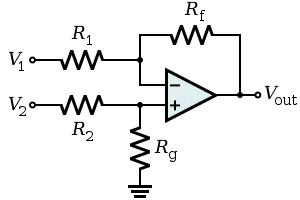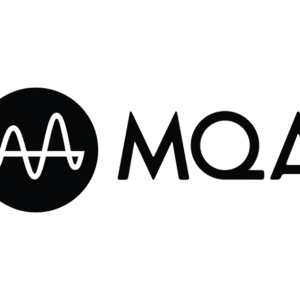In any endeavor, it’s important to be clear about what you hope to achieve and then worry about how you will get there. Here’s a good example from two recent recording sessions at Octave Records. Both sessions used the Steinway piano in Octave’s tracking room. The first was a solo classical music piece while the second was a group pop track. Does […]
Paul McGowan
Found 619 results
50 years ago in the dark ages of my past, I was determined to learn how circuits worked and what made amplifiers tick. Working full time as a disc jockey for the US Army in Germany at that time I had no practical means of attending school. Enter Herr Rudy Stroebel, chief engineer of the […]
PAUL MCGOWAN … For those with a clear understanding, this is a good post to skip. For those still unclear about what it means when we speak of high and low impedances, this might be right up your alley. The simplest way to think about impedance is to consider it an opposer. The higher the impedance […]
I wince when people equate op-amps with chips. An op-amp describes a topology, not a chip. Yes, the op-amp topology is often built onto a silicon wafer, but we should be careful not to forever bind the two together unless we’re clear about the difference. (If you’re technically minded there’s a great paper describing in […]
It’s more than just camaraderie. To non-engineering folk, our conversations might sound like a different language what with all the terminology bandied about. But more than terminology is the implied understanding of bigger concepts. Terms like -3dB, half power, slew rate, open loop, rise times, wave shapes, carry with them major implications. If our depth […]
PAUL McGOWAN / PS AUDIO Conventional wisdom would have us believe best results are obtained via simple solutions. The simpler the solution the better and cleaner the outcome. I find simple solutions are often the most difficult to accept and inevitably the hardest to find. How many times have you gone round and round in […]
PAUL McGOWAN Funny thing is, there’s really no good answer any more. I used to advocate RPG diffusors and personally I use a combination of RPG and DAAD Diffusors but it seems RPG has gone away from high-end accessibility and DAAD is not something you can afford. Where does one go now and what the […]
Paul McGowan writes: I struggled with how to write this because the subject’s rather complicated and in the end decided to keep it simple. Heck, it’s Sunday after all and we’re supposed to be taking a day off. Yesterday we covered analog volume controls and how they, by virtue of adding something into the signal […]
If you have a combination of old and new equipment is it possible to mix and match for best performance and synergy? Or, should you stick with one manufacturer’s vision of what’s best? Watch Now
Paul McGowan writes: I’ve been noodling on a comment made a few weeks ago that high-end audio is mostly a status symbol owned by wealthy people who do not care about audio or music. I must say I find that totally wrong and offensive. In fact, the more I think about the comment the more […]
When people ask me if parts of identical value but different construction sound unlike one another I kind of scratch my head. In my world, parts in the signal path all sound different. It’s like asking me if chocolate and vanilla taste different. The answer seems so obvious. But then I climb out of my […]
PAUL McGOWAN AGB’s latest column has been uploaded and for those of you interested to see what the Audio Hitman has to say about EQ’ing your system and frequency response in general, go here to read the article. For the faint of heart, I recommend abstaining. As I worked through the setup of the IRS […]
At first thought, it would seem obvious that a hard-wired connection between a digital source and a DAC would have to be better than a wireless connection where multiple steps and technologies combine to do the same, simple transfer of data as a simple hard wire. But because something is obvious doesn’t necessarily mean it’s […]
Paul McGowan / PS Audio: I am often asked to weigh in on upcoming decisions for stereo system upgrades: Bi-wire or bi-amp, what to do with the room, which amps, speakers, power products? Where to get the biggest bang for the buck. My answers are always conditional. I ask first what it is the person’s […]
When I first got interested in high-end audio in the prehistoric early 70s I was told I didn’t have an ear. I struggled to hear differences obvious to others and so I placed myself in a box with a label that read, “not a good listener”. Because I hadn’t an ear I relied upon those […]
Paul McGowan / PSA Audio After more years than I can count I am still trying to figure out mastering. This might seem kind of odd considering our own in-house mastering engineer, Gus Skinas, is one of the world’s most respected. Yet, still I struggle with defining exactly what they do. I do know they […]
PAUL McGOWAN Our rooms are as important as our equipment yet only a scarce few of us have the luxury of choosing our room dimensions. Typically we take what we can get within our home and make the best out of it. With our new building in process, we’re heavy into the architectural tasks of […]
There are many multi-driver speakers, but few that go floor to ceiling like the IRSV. Floor to ceiling multi-driver speakers are called a Line Source. What’s counter-intuitive about a line source is how specific the imaging can be. With that many drivers, one would think the image would be tall, rather than lifelike, when the […]
Paul McGowan When we try new software or add a new piece of gear we often discover more in the music. Suddenly, that bit of detail we didn’t know existed pops out of the musical landscape and we’re thrilled. We’ve uncovered missing information. Or have we? Was it ever really missing? Some equipment adds a […]
When people come to hear the IRSV system in Music Room One they’re always in awe of the number of drivers: 36 tweeters, 12 midranges, 6 woofers per side. Most loudspeakers have one of each: tweeter, woofer, perhaps a midrange. On a speaker like the IRS, the duties are shared. Each tweeter handles 1/36th of […]
There are many multi-driver speakers, but few that go floor to ceiling like the IRSV. Floor to ceiling multi-driver speakers are called a Line Source. What’s counter-intuitive about a line source is how specific the imaging can be. With that many drivers, one would think the image would be tall, rather than lifelike, when the […]
PAUL McGOWAN Kevin in Wappinger Falls New York (wherever that is) asked me an interesting question recently. “Arnie Nudell popularized the line source loudspeaker design and many of his most revered speakers such as the Quantum Line Source, the IRS 1B, the IRS V, and the Genesis 1 (and apparently at least the two larger members […]
MQA has everyone talking but what exactly is it? What’s its goals and how does it sound? Some suggest it’s the devil incarnate while others believe it’s a gift from heaven. What’s the truth? Watch Now Paul McGowan
Paul McGowan: We’ve been discussing how to identify a ground loop. Now it’s time to fix what we’ve identified as a problem. But let me warn you of a couple of things: reread what I have written about identifying them (make sure it actually IS a ground loop), secondly, the cure can be dangerous if […]








